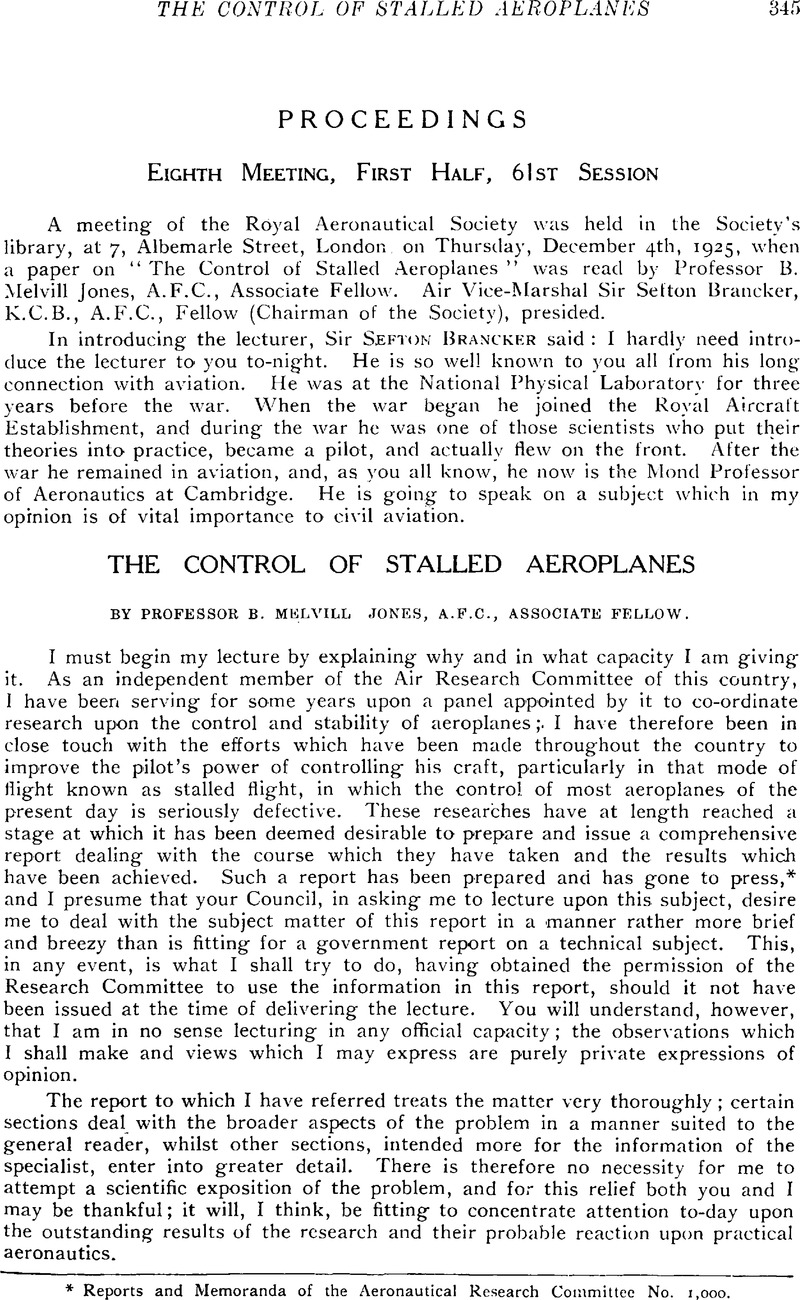No CrossRef data available.
Published online by Cambridge University Press: 24 August 2017

* Reports and Memoranda of the Aeronautical Research Committee No. 1,000.
* Journal of the K.Ae.S., October, 1923.
* In making these remarks I am, of course, safe from reprisals; for I insult no single individual, because no individual will ever admit that he belongs to an ignorant class, either of designers or scientists. † This coefficient may be looked upon as a number defining the relative moment exerted by different controls, after allowance has been made for variations in air density, size and velocity of the aircraft. Its precise definition is 1,ooox Moment/pv2Ss, where
p is the air density,
V tlse velocity of the aeroplane,
S the area of the wings,
s the semi-span of the wings.
The same coefficient will be used later to exprec" rudder power.
* Accidents due to a long continued spin have no bearing on the present discussion, the processes involved in checking an established spin being different from those for checking an Jncipknt spin.
* Described in R.M. 973.
* See Aeronautical Research Committee, R. & M. 866, February, 1923.